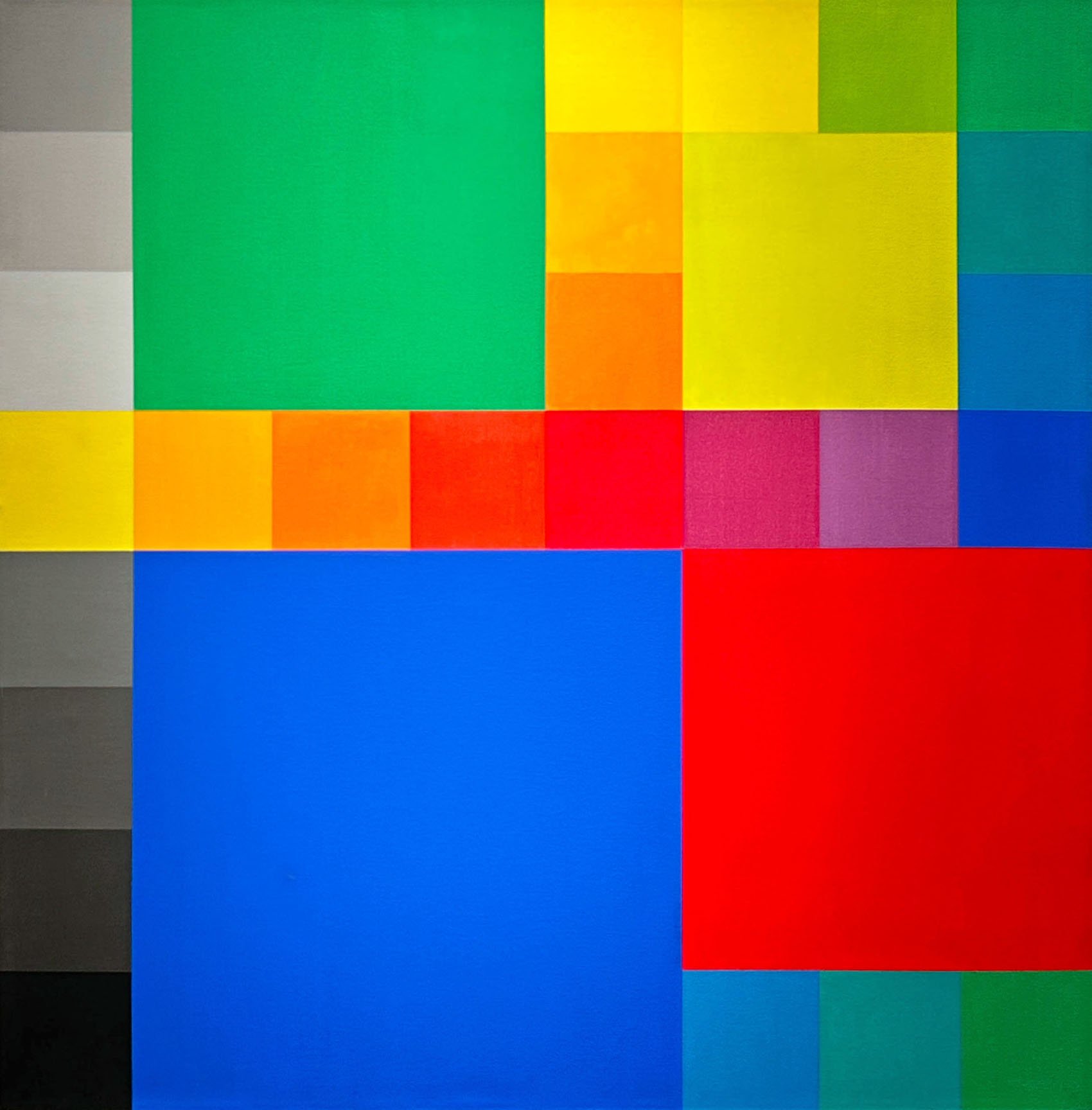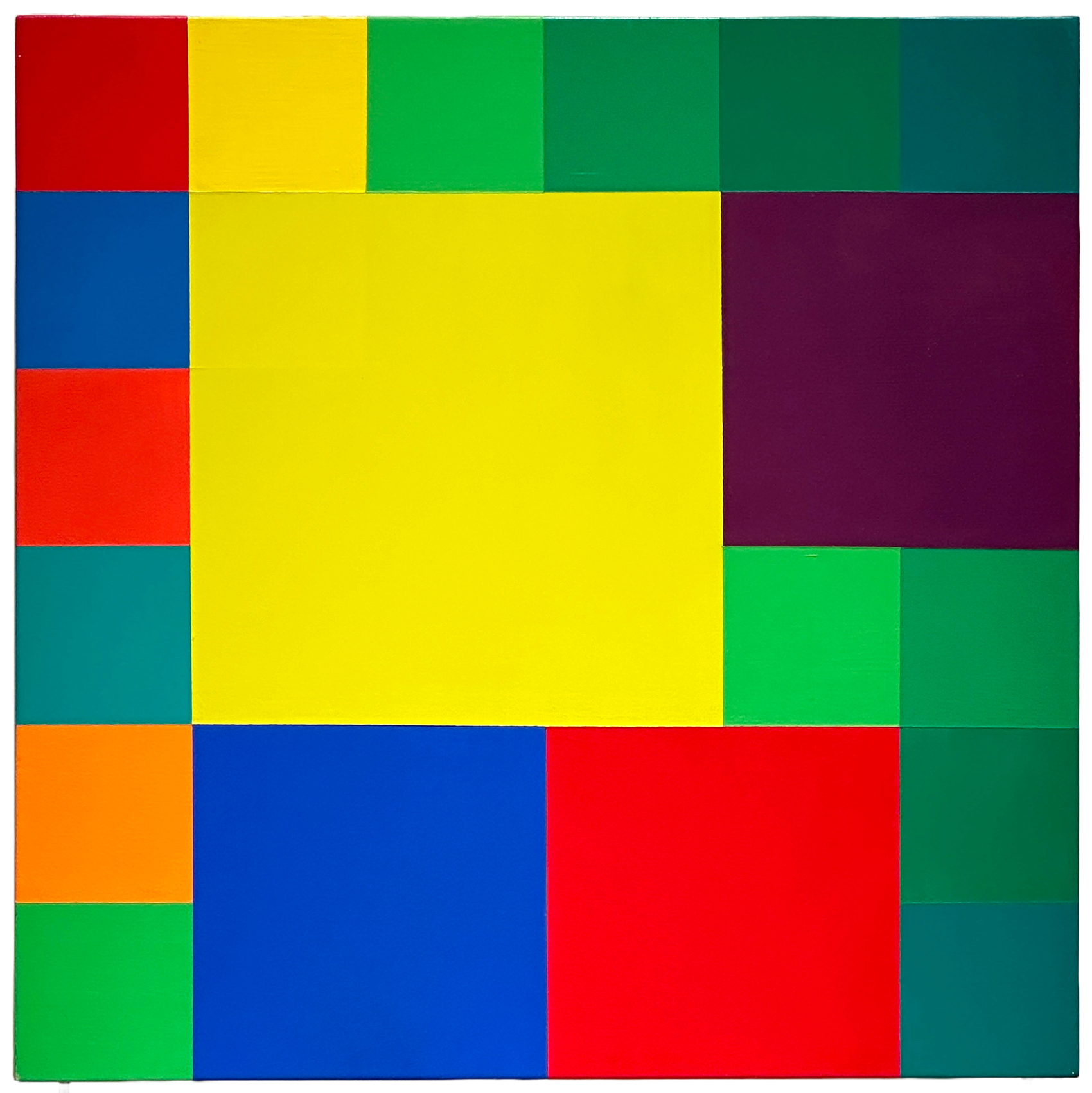September 4 - November 8, 2024
For availability and pricing, call 212-581-1657.
For this introduction to the works of Gabriele Evertz we have selected two significantly sized paintings from 1990 and three small paintings from 1987 to 1995. During this period, Evertz used collage to test color relations. She found the square as a basic formal unit de-emphasizes the viewer’s concern for shape while maximizing color interaction.
Evertz was included in the important catalogue The Optic Nerve accompanying the 2007 exhibition at the Columbus Museum of Art, Ohio to show the study of perception and color theory remains relevant. The same year she was in Optical Edge at the Pratt Manhattan Gallery.
Evertz’s work investigates sensations and perceptions. She uses the history and theory of color as basic tools of organization. She chose a uniform painting surface so the viewer can focus on the energy and relationships between the colors, effects which can shift over the course of observation. Informed by neuroscience and intuition, Evertz aims to reveal in her painting a new visual experience for the viewer in the universal language of color. She is open to the viewer’s response ranging from reason to rapture as her color brings a heightened awareness of being in the world.
In Evertz’s early works seen in our exhibition she uses a color system organized around Johannes Itten’s twelve hues of the color wheel plus black and white. Evertz settled on this system after years of experimentation. The rare use of gray in Painting Type III, 1990 presages her use of the value in more recent years as she discovered it is a very active, not neutral, tool in her progressions of chromatic hues. In the 1993 exhibition Presentation Painting at the Hunter College Art Gallery, her work is described as a marriage between color theory and intuition. In more recent years as the definitions and theories of abstraction have loosened, Evertz has been more open about the influence of nature and poetry. Her recent work of vertical and diagonal lines which she describes as edges of colors can reflect her daily observations of nature within the city.
Gabriele Evertz was born in Berlin and emigrated to the US at 19. After a career in architecture, Evertz moved into painting. She completed a BA in Art History followed by an MFA at Hunter, graduating in 1990. She frequently exhibited at Hunter College Art Gallery and with the American Abstract Artists since she was elected a member in 1996. In addition to her painting practice, Evertz was Professor of Art, Painting in Hunter College’s Department of Art & Art History, New York from 1990 to 2018. She is part of the Hunter Color School, alongside other color painters, including Vincent Longo, Doug Ohlson, Robert Swain, and Sanford Wurmfeld. She was a visiting critic at the Yale School of Architecture in 2002.






